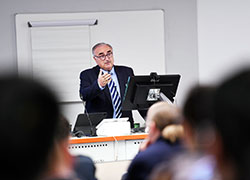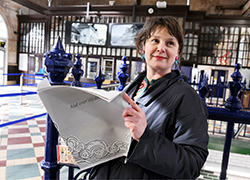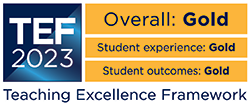A dance-forensics fusion
Saga Sigurdardottir, an Icelandic choreographer will be teaching and creating work for final-year students from Teesside University’s BA (Hons) Dance degree.
And sixty secondary school students from across the North-East will be turning into detectives as part of a Forensic Awareness day on Thursday 10 March.
Dance Saga is a performer and choreographer who works all over Europe. Prior to coming to Teesside she worked in Switzerland, and after Teesside will fly to Vienna for a performance.
Heike Salzer, Programme Leader for the BA (Hons) Dance, said: 'It is a great pleasure to have Saga as a visiting artist working with our students. She has been working all over Europe and the students will profit from having the opportunity to work with an international artist and will present the results at the end-of-year showing in May.'
Forensics Year 9 (aged 13-14) students from six schools will be exploring the world of practical forensics, to solve the fictitious murder of James Riddle.
They will use forensic evidence to find the guilty culprit from a quartet of four potential killers. Techniques used will include fingerprinting, DNA evidence, and examining footwear and fibres. Dr Brian Rankin, Head of the University’s Centre for Forensic Investigation, will give a lecture to the students at the conclusion of their investigations.
The students are from the following secondary schools: St. Cuthbert’s High School, Newcastle, Oakfields, Gilbrook and Ormesby, all Middlesbrough, All Saints, Ingleby Barwick, North Shore Academy, Stockton-on-Tees.
Angela Wood, Schools & Colleges Recruitment Co-ordinator (Pre-16), said: 'This is an exciting opportunity for pupils with a keen interest in Science to experience what it would be like to be a crime scene investigator. They will learn how to collect, record and store evidence through interactive activity as well getting to use the excellent facilities here at the University. This event takes science out of the classroom and shows the pupils how science is applied to a potential real-life situation.'
 Teesside University hosts groundbreaking hydrogen conference
Teesside University hosts groundbreaking hydrogen conference University supporting development of new £1m concrete plant
University supporting development of new £1m concrete plant Academic’s artwork on display at Middlesbrough station
Academic’s artwork on display at Middlesbrough station